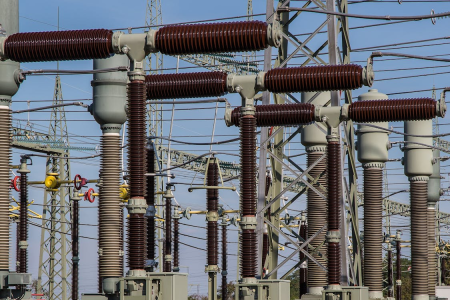This ‘suckerpunch’ electricity price hike is coming—here’s what might soften the blow
By
Maan
- Replies 10
Household budgets are already under strain—but another financial hit could be looming for residents across the east coast.
New figures suggest energy prices are set to climb higher than initially expected, with some states facing steeper rises than others.
Behind the increases are decisions made by major providers—raising concerns about affordability, equity, and what this means for everyday Australians.
Electricity prices were set to surge across Australia's east coast from 1 July—hitting harder than many had expected, and bringing fresh pain for households already grappling with rising living costs.
Major providers AGL and Origin Energy locked in new rates for millions of customers, confirming double-digit jumps in some states.
But while one state appeared to dodge the worst of the increases, others were bracing for significant hikes that could sting the average budget.
In New South Wales, AGL’s electricity prices were due to climb by 13.5 per cent.
South Australia would see an 8 per cent increase, followed by Queensland at 7.5 per cent.
Victoria’s rise was slightly lower at 6.8 per cent, but that still meant an extra $110 for a typical household.
Origin Energy had yet to confirm its new rates for Victoria—but gas customers in the state weren’t spared, with average bills set to climb by $85 per year, the highest rise nationwide.
‘This will be a suckerpunch for a lot of customers,’ Canstar spokesperson Sally Tindall said.
While prices were already expected to rise, the final figures exceeded earlier predictions—prompting political backlash and growing frustration over the government’s response to energy affordability.
Shadow Treasurer Angus Taylor didn’t mince words: ‘They imposed price caps that haven’t worked, they’ve completely failed, and we continue to see price hikes.’
There was, however, some relief on offer. Every household would automatically receive a $150 electricity discount from the federal government. In Victoria, concession card holders would get an extra $100 off.
Origin’s Chief Marketing Officer, Catherine Anderson, encouraged anyone under pressure to reach out: ‘There are plenty of options and payment plans available. We would really encourage our customers to reach out to us, we’re here to help.’
But with other retailers still finalising their own pricing, the full picture hadn’t yet landed.
Tindall had a message for those dreading their next bill: ‘Don’t get mad—get even. By shopping around you could potentially save hundreds of dollars off your electricity bill.’
For now, Aussies were being urged to stay alert, review their options, and prepare for what’s shaping up to be a challenging winter ahead.
Energy prices aren’t just numbers on a page—they affect how we live, what we cut back on, and how we plan for the months ahead.
For a deeper look at what’s driving the latest electricity hikes and what it could mean for your household, watch the video below.
Source: Youtube/Sky News Australia

With power bills climbing once again, are you planning to switch providers or stick with the one you know? Let us know your thoughts in the comments.
In a previous story, we looked at how one mum’s effort to keep warm during winter ended up costing her a shocking $1,200.
For seniors carefully managing heating costs on fixed incomes, it’s a timely reminder of how quickly energy bills can spiral out of control.
If you’re trying to stay cosy without breaking the bank, this one’s worth a read too.
Read more: We’re all trying to stay warm—but this cost one mum $1,200!
New figures suggest energy prices are set to climb higher than initially expected, with some states facing steeper rises than others.
Behind the increases are decisions made by major providers—raising concerns about affordability, equity, and what this means for everyday Australians.
Electricity prices were set to surge across Australia's east coast from 1 July—hitting harder than many had expected, and bringing fresh pain for households already grappling with rising living costs.
Major providers AGL and Origin Energy locked in new rates for millions of customers, confirming double-digit jumps in some states.
But while one state appeared to dodge the worst of the increases, others were bracing for significant hikes that could sting the average budget.
In New South Wales, AGL’s electricity prices were due to climb by 13.5 per cent.
South Australia would see an 8 per cent increase, followed by Queensland at 7.5 per cent.
Victoria’s rise was slightly lower at 6.8 per cent, but that still meant an extra $110 for a typical household.
Origin Energy had yet to confirm its new rates for Victoria—but gas customers in the state weren’t spared, with average bills set to climb by $85 per year, the highest rise nationwide.
‘This will be a suckerpunch for a lot of customers,’ Canstar spokesperson Sally Tindall said.
While prices were already expected to rise, the final figures exceeded earlier predictions—prompting political backlash and growing frustration over the government’s response to energy affordability.
Shadow Treasurer Angus Taylor didn’t mince words: ‘They imposed price caps that haven’t worked, they’ve completely failed, and we continue to see price hikes.’
There was, however, some relief on offer. Every household would automatically receive a $150 electricity discount from the federal government. In Victoria, concession card holders would get an extra $100 off.
Origin’s Chief Marketing Officer, Catherine Anderson, encouraged anyone under pressure to reach out: ‘There are plenty of options and payment plans available. We would really encourage our customers to reach out to us, we’re here to help.’
But with other retailers still finalising their own pricing, the full picture hadn’t yet landed.
Tindall had a message for those dreading their next bill: ‘Don’t get mad—get even. By shopping around you could potentially save hundreds of dollars off your electricity bill.’
For now, Aussies were being urged to stay alert, review their options, and prepare for what’s shaping up to be a challenging winter ahead.
Energy prices aren’t just numbers on a page—they affect how we live, what we cut back on, and how we plan for the months ahead.
For a deeper look at what’s driving the latest electricity hikes and what it could mean for your household, watch the video below.
Source: Youtube/Sky News Australia
Key Takeaways
- Electricity prices were set to rise from 1 July, with AGL and Origin confirming major increases across the east coast.
- New South Wales faced the steepest hike at 13.5 per cent, while Victoria's average household would pay $110 more.
- Gas prices in Victoria would also jump, costing the average household an extra $85 per year.
- A $150 federal rebate and extra Victorian concessions were offered, but experts urged Australians to shop around to save.
With power bills climbing once again, are you planning to switch providers or stick with the one you know? Let us know your thoughts in the comments.
In a previous story, we looked at how one mum’s effort to keep warm during winter ended up costing her a shocking $1,200.
For seniors carefully managing heating costs on fixed incomes, it’s a timely reminder of how quickly energy bills can spiral out of control.
If you’re trying to stay cosy without breaking the bank, this one’s worth a read too.
Read more: We’re all trying to stay warm—but this cost one mum $1,200!








